Is Smile Direct Club™ safe?
Smile Direct Club™ specializes in teeth straightening using clear aligner technology. They are a remote clear aligner supplier, a concept known as tele-dentistry. Smile Direct Club™ is one of several startups that promise to straighten your teeth without the need to visit a local dentist or orthodontist. Candid Co.™, Byte™, and SmileLove™ are a few other companies that operate identically to Smile Direct Club™.
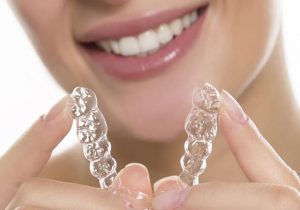
So what are clear aligners? Clear aligners are a series of firm, plastic trays designed to incrementally move your teeth into a more desirable position. They come as a series, where each clear aligner moves your teeth a fraction of a millimeter. As you continue going through your clear aligners, your teeth start to settle into their ideal position. This means that you can straighten your smile using clear aligners without having to wear braces!
Now let’s take a look at how SmileDirectClub™ clear aligners work? Traditionally, you had to visit your local dentist or orthodontist to receive clear aligner therapy. Well, this is no longer the case. Smile Direct Club™ offers clear aligners directly to customers without any direct dentist involvement (at least not one whom you’ll ever meet). There are two ways to receive Smile Direct Club™’s clear aligners: (a) Take your own teeth impressions using their starter-kit or (b) go into one of Smile Direct Club™’s stores, known as a Smile Shop™, and have your teeth scanned by a technician. You will receive your clear aligners in the mail within a few days and can start straightening your grin. Now that you understand how SmileDirectClub™ works, let’s take a look at how safe they are:
Risks of at-home clear aligners like Smile Direct Club™
As we mentioned above, there are two general ways to receive clear aligner therapy: (1) go to your local dentist or orthodontist (referred to as dentist-delivered clear aligners) or (b) purchase them online from Smile Direct Club™, Candid Co.™, etc. (known as at-home clear aligners). The biggest concern surrounding online clear aligner programs is their safety. Are DIY aligner programs such as Smile Direct Club™ safe? or are there risks and dangers which you need to be aware of? and is straightening your teeth without direct dentist supervision worth the savings? Let’s take a look at the top 5 risks of straightening your teeth sing do-it-yourself clear aligners, the likes of Smile Direct Club™ or Candid Co.™:
(1) Lack of proper initial diagnosis
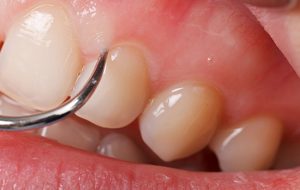
Is it safe to put clear aligners on teeth that have cavities? Definitely not! Should you wear clear aligners if you are suffering from periodontal disease? Most definitely not! This is why you must always see a dentist before starting any type of orthodontic treatment. Clear aligner therapy is no exception. You should always visit your dentist first to make sure it’s safe to start treatment
Smile Direct Club’s approach:
- Customer: “My gums are bleeding. Is it safe to straighten my teeth using clear aligners?”
- Representative: “I don’t see why not? Our clear aligners might fix your gum issues!”
- Customer: “Can I wear clear aligners if I have cavities?”
- Representative: “Sure. Your cavities can’t get that much worse within a few months.”
- Customer: “I still have my wisdom teeth and they hurt occasionally. Can I still wear clear aligners to straighten my teeth?”
- Representative: “Of course! Wisdom teeth have nothing to do with clear aligners.”
You should only straighten your teeth once all underlying dental conditions have been properly diagnosed and treated. Cavities, gum disease, wisdom impaction, and many other dental conditions can affect the final outcome. Do not rely on the advice of a smile concierge. Always consult with a licensed dentist prior to starting clear aligner therapy.
Dentist’s approach:
- Patient: “My gums are bleeding. Is it safe to straighten my teeth using clear aligners?”
- Dentist: “No, it’s not safe. Bleeding gums are most likely a sign of gum disease. You need to treat your gum disease first. Orthodontic treatment causes your teeth to become loose temporarily. This could contribute to additional bone loss which can damage your already infected teeth and gums. Let’s discuss how we can treat your gum disease first and then we can start your clear aligner therapy.”
- Patient: “Can I wear clear aligners if I have cavities?”
- Dentist: “Definitely not! Dental cavities can reach your tooth nerve at any time, causing pain and infection. There is no way to determine how long it takes for a cavity to cause problems. It could be days, weeks, or months. Therefore, I highly recommend that you fix your cavities, then straighten your teeth.”
- Patient: “I still have my wisdom teeth and they hurt occasionally. Can I still get teeth aligners to straighten my teeth?”
- Dentist: “It depends on the condition of your wisdom teeth. If your wisdom teeth are fully embedded in your jaws, they are unlikely to cause an immediate problem. This means that it is safe to start clear aligner therapy. However, if your wisdom teeth are sticking out or causing pain, they need to be addressed. Consider removing your wisdom teeth before starting clear aligner therapy. Otherwise, they will push on your remaining teeth and make them become crooked again.”
Do-it-yourself clear aligner programs like Smile Direct Club™ undermine the importance of addressing your oral health. Neglecting your cavities and gum disease can lead to infection, bone loss, and other long-term problems. Don’t gamble with your oral health! Having straight teeth is not worth damaging your teeth and gums. Be sure to consult with your dentist first and only start treatment once you’ve been cleared.
(2) Failure to identify cases which require braces

Clear aligners have many benefits. They are comfortable, convenient, and you can remove them when needed. However, clear aligners do have their limitations as well. The main disadvantage of clear aligners is that they can’t fix complex orthodontic conditions. Only your dentist or orthodontist can determine if your orthodontic condition is suitable for clear aligner therapy or braces. This comes from years of dental school education and training. Your dentist will examine you for the following conditions before starting treatment:
- Is your orthodontic condition due to skeletal or dental misalignment?
- Do you suffer from Class I, 2 or 3 malocclusion?
- What are your canine and molar relationship?
- What is the extent of your overbite and overjet?
- Are your upper and lower midline position correct?
- What is the extent of your teeth crowding or spacing?
- What is your anterior and posterior teeth relationship?
- Is your bite correct?
- Do you suffer from an overbite, openbite, deepbite, crossbite or underbite?
Certain orthodontic conditions can be treated perfectly fine using clear aligners. Others don’t respond as well to clear aligner therapy. In fact, some cases actually worsen with clear aligners. Properly diagnosing your orthodontic condition is crucial to deciding on the right treatment. Only your dentist or orthodontist can determine if you’re a good candidate for clear aligners or if you need to go with braces instead.
Smile Direct Club’s approach:
- Customer: “Can I fix my underbite with clear aligners?”
- Representative: “Sure you can. Our clear aligners can fix your underbite!”
- Customer: “Can I fix my crossbite with clear aligners?”
- Representative: “Of course. Our teeth aligners can fix your crossbite!”
- Customer: “Can I fix my overbite with clear aligners?”
- Representative: “You absolutely can. Our clear aligners can fix all overbites!”
The problem here is, Smile Direct Club™ ‘s representatives are not actual dentists and they have no understanding of different orthodontic conditions. Your smile concierge automatically assumes that every orthodontic case can be fixed using clear aligners. This is not true. The dentist who is in charge of your Smile Direct Club™ treatment, never gets to see you in person. You can’t properly diagnose one’s orthodontic status simply by looking at a computer scan from a thousand-miles away. Ultimately, your underlying orthodontic condition could go undiagnosed and won’t get properly treated using Smile Direct Club™ clear aligners.
Dentist’s approach:
- Patient: “Can I fix my underbite with clear aligners?”
- Dentist: “Most likely not. Clear aligners are very effective at straightening teeth and closing gaps. However, they are not capable of fixing most underbite cases. Treating your underbite will require braces.”
- Patient: “Can I fix my crossbite with clear aligners?”
- Dentist: “Definitely not. Crossbites are very difficult to fix and they almost never qualify for clear aligner therapy. Just about all crossbite cases require braces.”
- Patient: “Can I fix my overbite with clear aligners?”
- Dentist: “It depends on how large your overbite is. If your overbite is mild-to-moderate, then you’re probably a good candidate for clear aligner therapy. However, if your overbite is very large, then you will require braces.”
Certain simple orthodontic cases are treatable using at-home clear aligners. Other more complex cases can be fixed with clear aligners. However, it’s important to have a dentist supervise your treatment. Procedures such as tooth contouring, attachment placement, and bite calibration all require the presence of a dentist or orthodontist. These cases should only be treated using dentist-delivered clear aligners. Finally, the most complex orthodontic conditions don’t qualify for clear aligners. They require braces instead.
(3) Orthodontic relapse
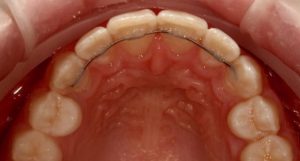
Clear aligners can be very effective at straightening your teeth when used correctly. However, for your teeth to stay straight, you need to figure out the underlying cause of your orthodontic condition. Here are a few things you should think about before starting your clear aligner therapy:
- Are your teeth crooked because they are too large for your jaws? or is it because your wisdom teeth have started pushing on your other teeth?
- Are the gaps in your mouth the result of a size discrepancy between your teeth and jaw size? or were they caused by a missing tooth?
- Is your overbite caused by poor positioning of your upper and lower teeth? or do you suffer from an underlying skeletal discrepancy?
It takes an experienced dentist to understand the subtle details surrounding straightening your smile. These little details can make a big difference in the final outcome and how your teeth will look 5, 10 or 15 years from now.
Smile Direct Club’s approach:
- Customer: “My teeth are really crowded. Will they remain straight after clear aligner treatment?”
- Representative: “Sure they will. Our clear aligners can fix your grin and they will remain straight forever!”
- Customer: “I’m missing a tooth. Is this a problem if I want to straighten my teeth?”
- Representative: “Not at all. Use our clear aligners to straighten your grin and fix the missing tooth afterward.”
Dentist’s approach:
- Patient: “My teeth are really crowded. Will they remain straight after clear aligner treatment?”
- Dentist: “It depends on how much teeth crowding there is. If your teeth crowding is minor, there’s a good chance that your teeth will remain in their new position. Just be sure to wear your retainers as instructed. Do you still have wisdom teeth? If so, I would recommend placing a fixed-retainer on them. This prevents your wisdom teeth from shifting your remaining teeth. If you have more advanced teeth crowding, it’s best to perform tooth contouring to create space for proper tooth movement.”
- Patient: “I’m missing a tooth. Is this a problem if I want to straighten my teeth?”
- Dentist: “It depends on which tooth you’re missing. If you’re missing a terminal tooth then this shouldn’t be a problem. Finish your clear aligner therapy, then place a dental implant to replace your missing tooth. If you’re missing a front tooth then you need to plan accordingly. Without replacing your missing tooth, your teeth will slowly shift into this gap. By the way, would you like a fake tooth while I’m straightening your teeth? I can add filling material into your clear aligner to resembles your missing tooth. This way, you won’t be walking around with a front tooth missing during your clear aligner therapy.”
More than half the people who wear braces or clear aligners need to redo their treatment within a decade! Band-aid treatment may produce satisfactory short-term results, but it fails in the long-run. Fixing your teeth without addressing the underlying orthodontic condition leads to orthodontic relapse within a few years. Ultimately, you end up exactly where you started off in just a few years.
(4) Damage to your bite
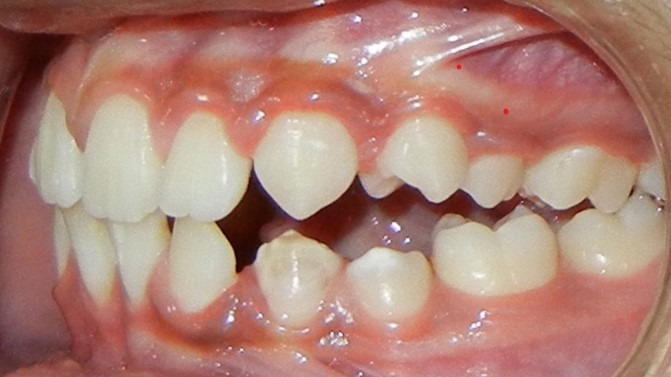
Your bite refers to the way your back teeth come together when you close your mouth. A correct bite is the cornerstone of orthodontic science. Having a correct bite is very important to the long-term health of your teeth. If your teeth don’t come into proper contact with one another, then your bite is considered to be off. Having a poor bite relationship has some serious consequences, for instance:
- An incorrect bite increases the likelihood of chipping and fracturing your teeth
- A poor bite increases the chances of your fillings and crowns breaking and failing
- Having a poor bite overstresses your jaw joints which can lead to headaches, migraines and tension pain in your head and neck region
Let’s take a look at how Smile Direct Club™ and dentists approach your bite:
Smile Direct Club’™‘s approach:
- Customer: “Will clear aligners fix my bite?”
- Representative: “They just might!”
You won’t hear a lot of no’s from Smile Direct Club™ people. This is because they don’t understand the problems that arise due to negligent orthodontic treatment. Trying to fix complicated orthodontic misalignments using clear aligners is usually ineffective. Simply wearing a couple of aligners to straighten your front few teeth will do nothing to address your bite problems. Neither will it fix any underlying symptoms resulting from a poor tooth relationship.
Dentist’s approach:
- Patient: “Will clear aligners fix my bite?”
- Dentist: “Clear aligners can make some minor bite improvements. However, if you’re suffering from bite issues, you should wear braces. Avoid at-home clear aligners if you want to improve your bite. In fact, unsupervised at-home clear aligner programs can mess up your bite. Consider dentist-delivered clear aligners if you’re looking to improve your bite using clear aligners.”
If you’re looking to enhance your bite relationship, we recommend that you rely on the expertise of a dentist or orthodontist with the training and experience to understand complex bite relationship issues. Your dentist has the knowledge and expertise to address these complications. They are also capable of fixing your bite relationship whenever required.
(5) Lack of accountability
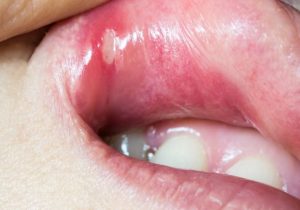
What happens when something goes wrong during your clear aligner treatment? Accidents happen, especially when you’re moving teeth around:
- Your dental fillings may separate from your teeth
- Your crowns or porcelain veneers may pop off
- You could cut your lips or cheeks
When there’s a dentist in charge of your clear aligner treatment, you have nothing to worry about. Simply visit your dentist and he or she will fix the problem. But what if the same thing happens with Smile Direct Club™? One option is to hop on a plane and go to Nashville to meet the dentist who approved your clear aligner program! The more practical solution is to find a local dentist. However, be prepared to pay a hefty sum to fix your problem. A $75 crown cementation can easily turn into a $1,000 new crown scenario. Lack of access to a local dentist can be problematic when emergencies arise. There’s simply no substitute for having access to a local dentist when you need one.
Smile Direct Club’s approach:
- Customer: “My teeth have been hurting when I wear my aligners. What should I do?”
- Representative: “Just give it some time and it should get better. Our aligners are extremely safe and they are BPA-free so you should be okay.”
- Customer: “I think my clear aligners might be cutting my gums. Should I be worried?”
- Representative: “Don’t worry, I’m sure it’ll get better within a couple of days.”
- Customer: “I finished my clear aligner therapy but I feel like my teeth are not that straight. What should I do?”
- Representative: ” I think your teeth look great so I wouldn’t worry about it.”
Dentist’s approach:
- Patient: “My teeth have been hurting when I wear my aligners. What should I do?”
- Dentist: “Is it just one tooth or are all of your teeth hurting? It’s very likely that the discomfort you are experiencing is related to your clear aligners. However, there are other things that could go wrong that need to be ruled out. Let me examine your teeth. I will let you know exactly what is happening so you don’t have to worry about it.”
- Patient: “I think my clear aligners might be cutting my gums. Should I be worried?”
- Dentist: “When did you switch out your most recent clear aligner? It’s very likely that the pain you’re experiencing is related to your new clear aligner. However, there are other dangerous conditions that mask themselves as sore lesions. We need to rule these out. I will examine your mouth to make sure that there’s nothing serious going on. We can also review how you’re wearing your aligners and make sure your progress is on track.”
- Patient: “I finished my clear aligner therapy but I feel like my teeth are not that straight. What should I do?”
- Dentist: “There’s always the chance that your teeth didn’t settle into their ideal position. Let’s examine your teeth to see what’s going on. If you require additional movement, I could make you a series of refinement aligners. Come on in so we can discuss your concerns. Let’s come up with a solution to improve your new smile.”
Dentists are medical professionals who are trained to care about their patients. Their reputation and license depends on it. Companies and corporations care about profits and income statements. If you’re comfortable being a customer, then you’ll do fine with do-it-yourself programs like Smile Direct Club™. Just don’t expect the same level of personal care and attention to detail as you would from your neighborhood dentist. If you’re seeking one-on-one personal care by a doctor, then we recommend that you see your local dentist or orthodontist instead.
Is there another way to get clear aligners from your dentist at a comparable price?
There are a couple of ways to go about getting affordable clear aligners directly from your local dentist or orthodontist. Of course, you’ll have to do some research beforehand. Here are a few different ways you could straighten your smile with dentist-delivered clear aligners at a price comparable to Smile Direct Club ™ :
(1) Invisalign® Express

One option to get affordable clear aligners from your local dentist is to see if you qualify for Invisalign® Express. Invisalign® charges dentists based on how many clear aligners it takes to straighten your smile. If straightening your smile is simple, requiring just a few clear aligners, then you may qualify for Invisalign® Express. You still need to do some shopping around to get a good price on any Invisalign® program. To get started, find a local dentist or orthodontist near you to see if you qualify for Invisalign® Express.
(2) ClearCorrect™
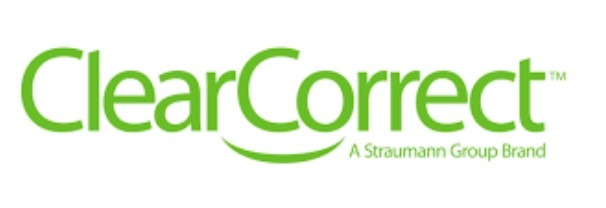
Another affordable clear aligner treatment option is to go with an Invisalign alternative like ClearCorrect™. ClearCorrect™ is a cost-effective clear aligner system used as a substitute to Invisalign®. Plus, ClearCorrect™ clear aligners usually cost 10 to 20% less than Invisalign® clear aligners. While not nearly as expensive as Invisalign®, Clear Correct™ clear aligners are still priced a bit higher than Smile Direct Club™ .
(3) Even28 at-home™

A final option to affordable clear aligner therapy is to see if you qualify for Even28 at-home™ clear aligners. Even28 at-home™ is perfect for those who would otherwise qualify for Smile Direct Club™ but prefer receiving treatment from a local dentist. Your dentist will perform a diagnosis, take your impressions and design your clear aligner program. The rest of your treatment can be completed at the comfort and convenience of your own home. As a bonus, you will have access to your Even28 provider dentist should you ever need them. The best part about Even28 at-home™ is that it is priced similarly to Smile Direct Club™ but without the risks and dangers of do-it-yourself clear aligner programs. Even28 at-home™ has a fixed cost of $1,995 which is similar to Smile Direct Club™’s price.
0 Comments